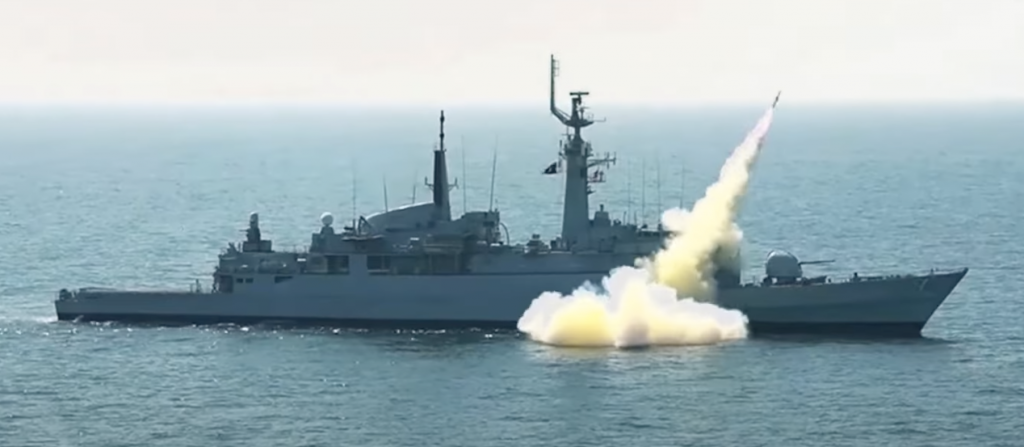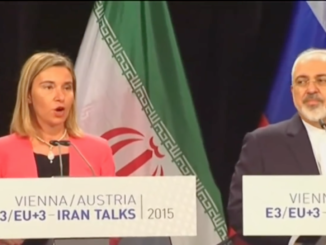
Naval power is an important political instrument and critical national security ingredient of any maritime state. Historically, seas have played fundamental role in shaping the geopolitcal environment. Themistocles (524-460 BC) once stated, “whosoever can hold the sea has command of everything.” Alfred T. Mahan, while theorizing his concept of sea power, famously argued, “whoever rules the seas, rules the world.” In early 20th century, admiral Erich Raeder also deduced, “all wars will be setteled by sea-power.” The importance of oceans has magnified even further in modern times. Despite of improvements in other transporation mediums, seas continue to constitute the bulk of international trade. The economic conceptulization of oceans formulated the model of blue economy. The blue economy deals with the exploration and exploitation of maritime economic potential of a state including international trade through sea lines of communications (SLOCs), organic resources like fishing, inorganic resources like hydrocarbon deposits, coastal tourism, energy generation, shipping industry and all fiscal activities related to littoral and deep waters. The blue economic inspiration and the sea power development are interdependent, and share directly propostional relationship with each other.
Apart from economic axis, naval power serves strategic interests of maritime nations including: provision of maritime security, assertion of sovereignty on claimed territories, execution of naval diplomacy and projection of naval coercion. The naval coersion includes gunboat diplomacy as well as maritime deterrence which in turn can be conventional and nuclear in nature.
The inspiration for naval force development is driven by the maritime interests, threat environment and the economic stability of a nation. Histrocially, Pakistan has struggled to raise credible naval prowess primarily due to economic restrictions and the maritime blindness of political and military leadership. Therefore, Pakistan Navy remained a force of approximately a dozen frigate size warships, few submarines and handful number of maritime patrol assets. The presence of such limited war fighting capacity hampered Pakistan naval ambitions and kept posing acute challanges regarding regional naval balance of power.
In recent years, a policy shift has taken place to realize the blue economic potential of Pakistan – a trend symbolizing growing Maritime Domain Awareness. The initiation of China Pakistan Economic Corridor (CPEC) project – the flag ship of China’s global Belt Road Initiative (BRI) – has opened new prospects of economic progression. The development of Gwadar port city and its proximity with Strait of Hormuz – the choke point through which 30% of global oil shippments pass – on one side has augumented the maritime influence of Islamabad but on opposite side has increased the scope of maritime threats of both symmetric and asymetric nature. In parallel, the aggressive naval build up by India and its policy of nuclerization of Indian Ocean under the blanket of strategic stability, clearly authenticates New Delhi’s growing hegemonic ambitions in the Indian Ocear Region (IOR). The emerging maritime security environment dicates that Pakistan navy must work in conventional as well as nuclear dimension to maintain the regional maritime balance of power and subsequently safeguard its growing national interests.
The capacity buildup roadmap of Pakistan Navy has been discussed by previous CNS Admiral Zafar Mahmood Abbasi and current CNS Admiral Muhammad Amjad Khan Niazi on separate occations. The modernization efforts will comprehensively cover all three dimensions of naval wafare, i.e. surface, sub-surface and air. PN now envisions a surface fleet of fifty warships, including twenty major warships, which will be organized into three Surface Task Groups (STGs). Each STG will be stationed in Gwadar, Ormara and Karachi respectively. The requisite flotilla size will be attained by procurement of four Type-54AP frigates from China, four Milgum class corvettes from Turkey, heavy tonnage ships of unknown origin and indigenous Jinnah class frigate program. These upcoming warships, many of which are already in construction phase, will add in exisitng fleet of four Zulfiquar class frigates and two newly acquired Yarmook class corvettes. Plus, PN intends to locally construct dozens of fast attack crafts to supplement its littoral defenses. The modern warships will be equipped with state of art sensors, electronic warfare (EW) suite, and next generation armaments. Overall, the STGs will be configured as per the given threat spectrum and will augment navy’s anti surface warfare (ASuW), anti-air warfare (AAW) and anti-submarine warfare (ASW) capabilities by many folds.
Regarding submarines, PN is in process modernizing its exisitng Khalid class subs from Turkey, is expecting eight Hangor class subs from China by 2028, and is planning to acquire shallow water attack submarines (SWATs) to replace existing Cosmos class midgets. The force of eleven Air Independent Propusion (AIP) submarines comprising of Khalid and Hangoor class subs will constitute the mainstay of Pakistan’s underwater sea denial potency while SWATs will diversify PN’s littoral and special operational capabilities. In parellel, PN is raising a fleet of state of the art maritime patrol aircrafts, ISR drones, and new helicopters in transport and ASW configurations. The employment of Jf-17 Thunder aircrafts with new arrays of anti-ship missiles and beyond visual range engagement capability has further consolidated Pakistan’s air envelop in Northern Arabian Sea. Major progression has been achieved in the area of anti-ship cruise missiles (ASCM). Variety of coastal, ship borne, air launched and submarine launched cruise missiles have already been deployed or are in advance phase of development.
The fundamental question thus emerges, is Pakistan’s naval force modernization sufficient enough to credibly deter Indian Navy? Deterrence is the denial of hostile actions of the adversary by threatening retaliatory use of force. Based upon nature, deterrence is broadly classified into nuclear and conventional domains. In the nuclear domain, both New Delhi and Islamabad now view seas as a medium of assured retaliatory nuclear capability. The employment methodology, however, is very different. Unlike India, which is organizing its sea-based nuclear deterrent on nuclear ballistic submarines (SSBNs) armed with sea launched ballistic missiles (SLBMs), Pakistan is designing its sea-based nuclear deterrent – as far as open source information is concerned -around AIP based submarines (SSP) equipped with sea launched cruise missiles (SLCMs). This contrast is a byproduct of strategic environment variablity, i.e. India deterrence spectrum is two fold and includes China and Pakistan, while Pakistan seeks to deter India only. The nuclear developments in Arabian Sea proves that PN will be – if not already is – the custodian of Pakistan’s assured second strike capability and will play crucial role in securing regional strategic stability.
The framework of conventional deterrence is comparatively more complicated. John J. Mearsheimer, while detailing the concept of conventional deterrence, emphasized that the technology driven capabilities have transformed the military calculations. The smaller forces with technological advantages can effectively deter bigger adversaries particularly in defensive warfare. The nuclear deterrence is chiefly based upon deterrence by punishment and is purposed to nulify the risk of major conflict. Conventional deterrence in contrast is pre-dominately reliant upon deterrence by punishment and is meant to thwart low end and limited conflicts. For attainment of full spectrum deterrence, attainment of credible nuclear and conventional deterrence is critical.
In recent decades, India has assertively emphasized on diversification of its maritime influence. The primary motivations being to achieve regional hegemony and to counter growing Chinese influence in IOR. On one side, India has become part of US-led quad alliance, while on other side it is extensively modernizing and expanding its naval forces. By 2030, Indian Navy is expected to achieve target of 175 warships including twenty 6,000+ tons warships and two aircraft carriers further supplemented by roughly two dozen submarines (conventional and nuclear) and a growing fleet of air borne maritime assets.
Pakistan Navy cannot equate Indian Navy on tonnage basis. It neither has the equivalent capacity nor the requirement. Unlike Indian navy, which is postured to achieve sea control and is tasked to counter mutiple fronts simultaneously, Pakistan navy is tailored to exercise sea denial and is primarily meant to deal with India centric threats only. Even after completion of forementioned modernization programs, PN will remain pre-dominately committed towards rainforcing its anti access/area-denial (A2/AD) capabilities a move akin to its strategic requirements. For manifesting credible deterrence, PN must retain synchronization with the technological progression and evoluting warfare concepts. The modern warfare is less about attrition, numerical strength and mass fire power, and more about flexibility, force synergy and precise fire power. Instead of force concentration, manoeuver warfare is preferred. The naval force with more robustness, better network centricty, advance non-contact combat potential and superior electromagnetic prowess, is more likely to prevail irrespective of the size. The nuclear threshold deny feasibility of major wars and instead grant space to limited confrontations only – a low conventional threshold where numerical superiority can be countered by effective employment of force in being. Therefore, Pakistan must keep consolidating its naval prowess in nuclear as well as conventional domains for a sustainable full spectrum deterrence in order to ensure geopolitical equilibrium and regional balance of power.
![]()




Ahmed Ibrahim, good article with realistic assessment.